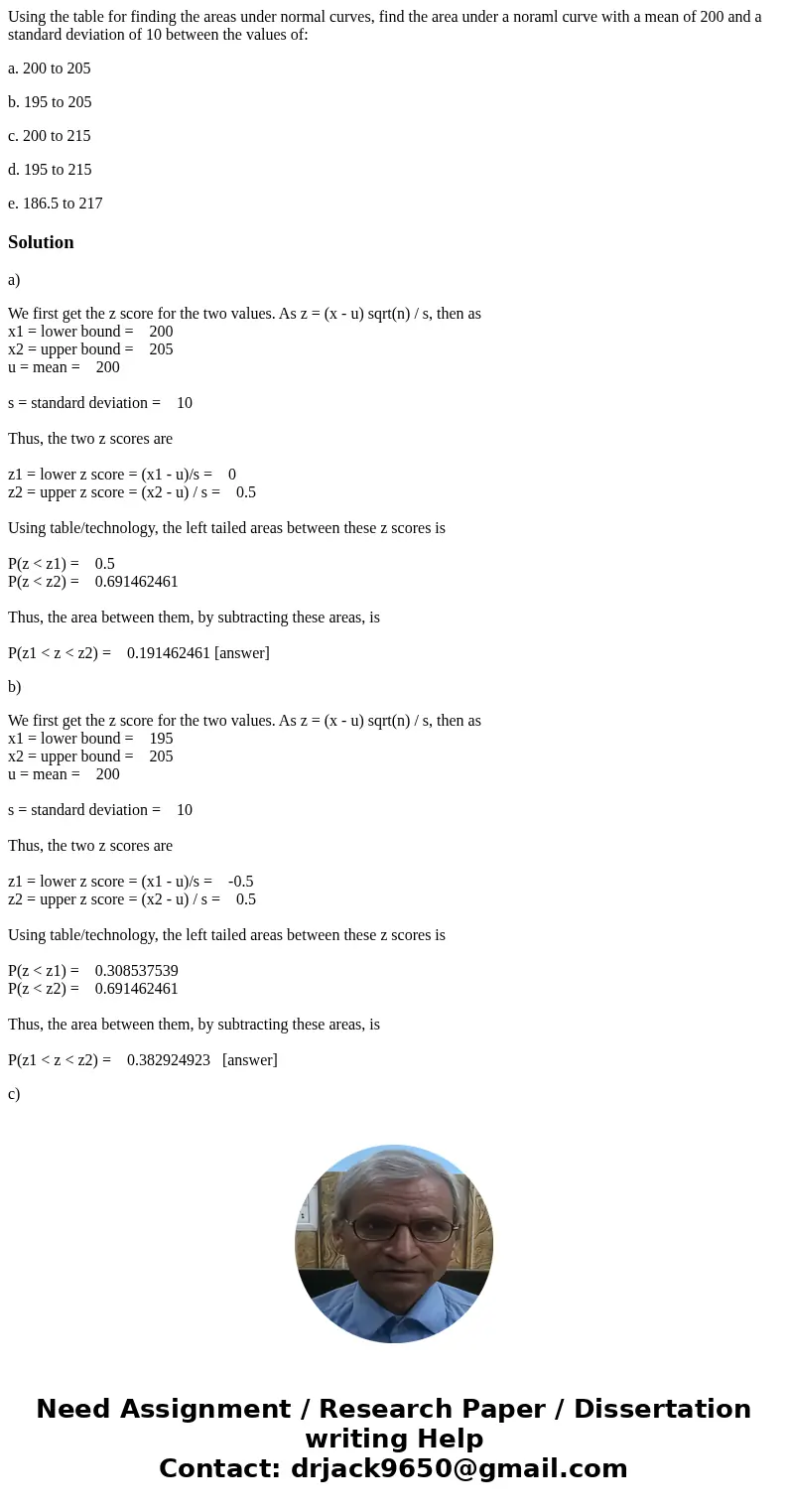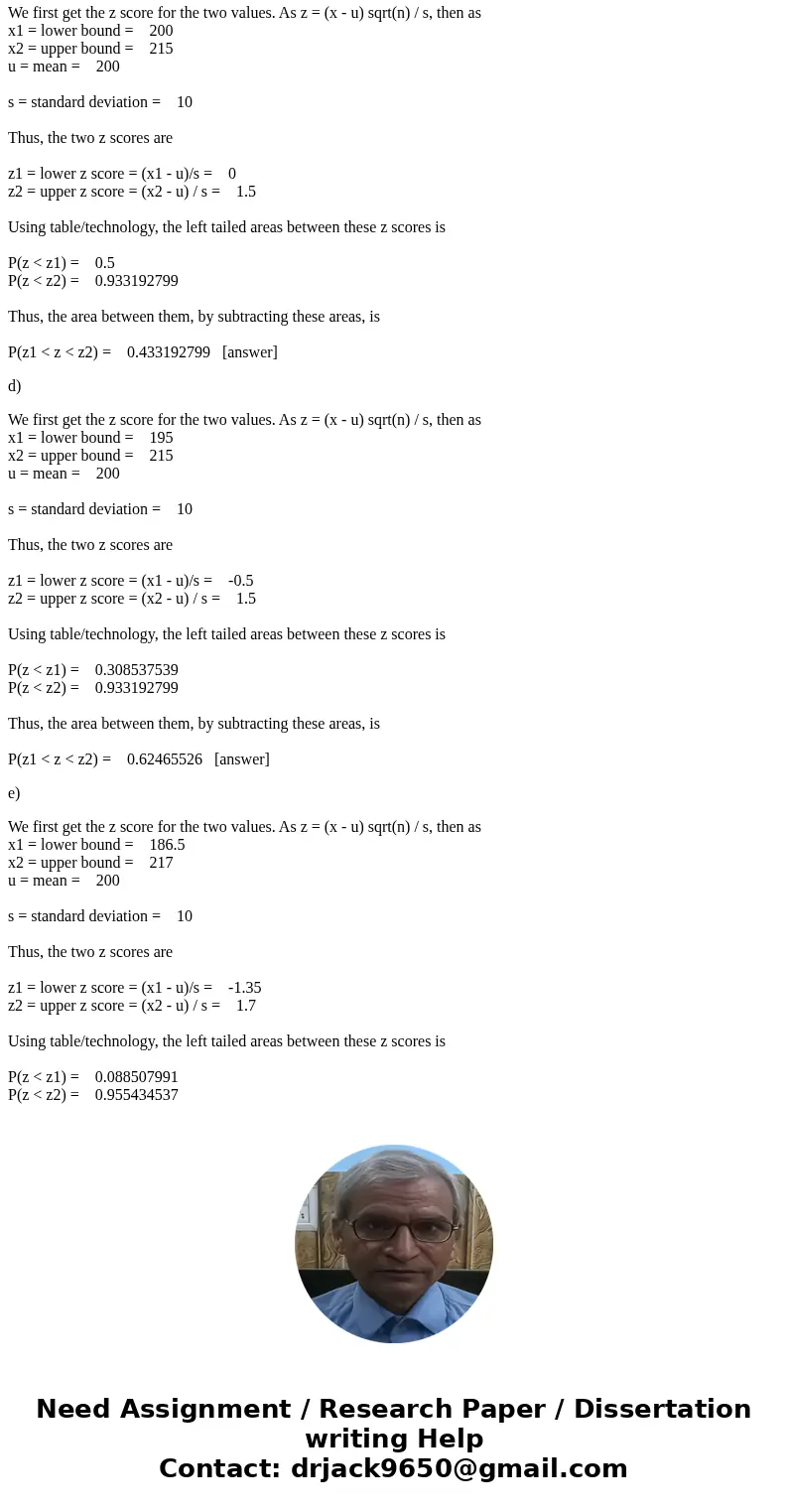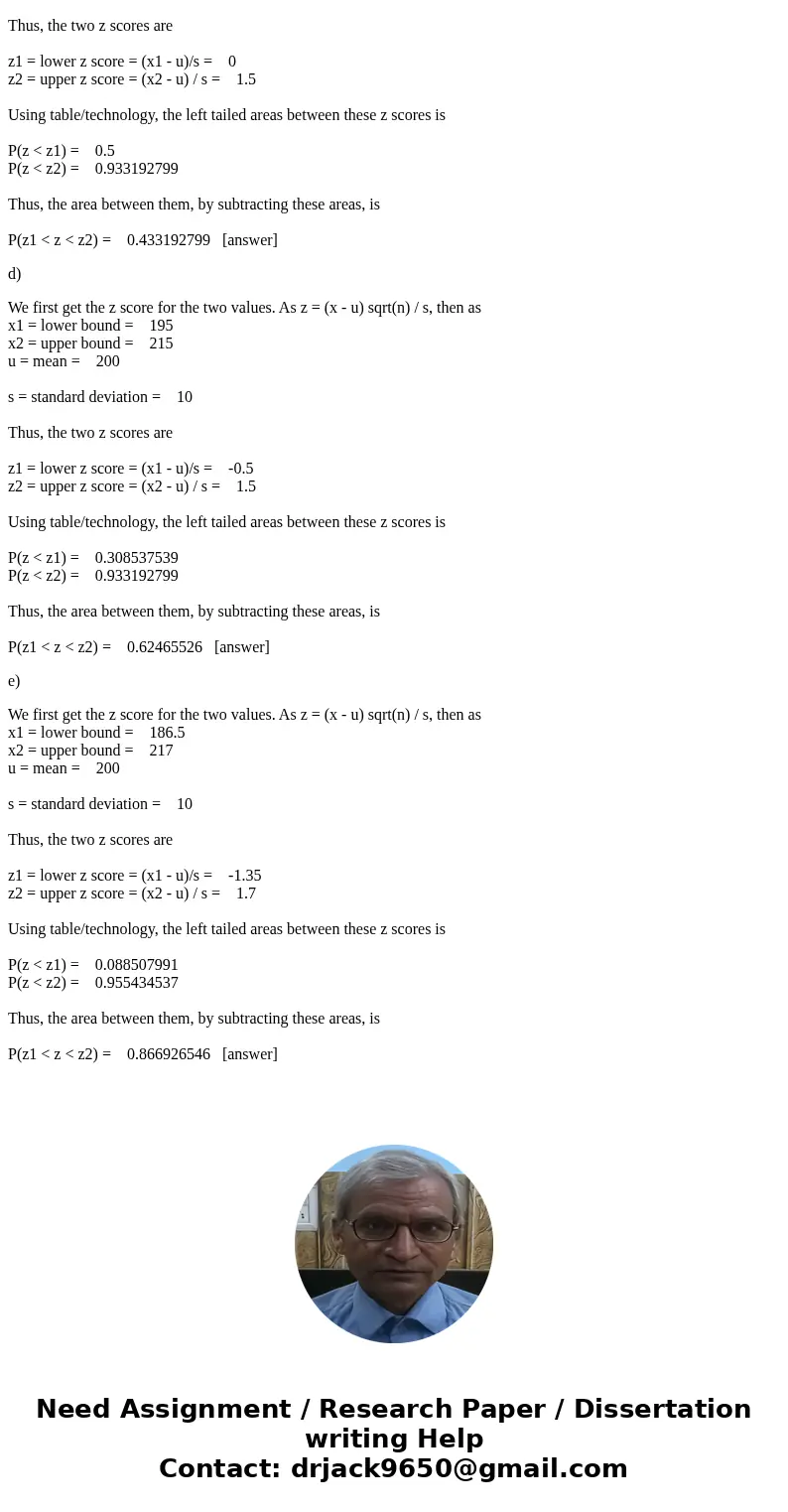Using the table for finding the areas under normal curves fi
Using the table for finding the areas under normal curves, find the area under a noraml curve with a mean of 200 and a standard deviation of 10 between the values of:
a. 200 to 205
b. 195 to 205
c. 200 to 215
d. 195 to 215
e. 186.5 to 217
Solution
a)
We first get the z score for the two values. As z = (x - u) sqrt(n) / s, then as
x1 = lower bound = 200
x2 = upper bound = 205
u = mean = 200
s = standard deviation = 10
Thus, the two z scores are
z1 = lower z score = (x1 - u)/s = 0
z2 = upper z score = (x2 - u) / s = 0.5
Using table/technology, the left tailed areas between these z scores is
P(z < z1) = 0.5
P(z < z2) = 0.691462461
Thus, the area between them, by subtracting these areas, is
P(z1 < z < z2) = 0.191462461 [answer]
b)
We first get the z score for the two values. As z = (x - u) sqrt(n) / s, then as
x1 = lower bound = 195
x2 = upper bound = 205
u = mean = 200
s = standard deviation = 10
Thus, the two z scores are
z1 = lower z score = (x1 - u)/s = -0.5
z2 = upper z score = (x2 - u) / s = 0.5
Using table/technology, the left tailed areas between these z scores is
P(z < z1) = 0.308537539
P(z < z2) = 0.691462461
Thus, the area between them, by subtracting these areas, is
P(z1 < z < z2) = 0.382924923 [answer]
c)
We first get the z score for the two values. As z = (x - u) sqrt(n) / s, then as
x1 = lower bound = 200
x2 = upper bound = 215
u = mean = 200
s = standard deviation = 10
Thus, the two z scores are
z1 = lower z score = (x1 - u)/s = 0
z2 = upper z score = (x2 - u) / s = 1.5
Using table/technology, the left tailed areas between these z scores is
P(z < z1) = 0.5
P(z < z2) = 0.933192799
Thus, the area between them, by subtracting these areas, is
P(z1 < z < z2) = 0.433192799 [answer]
d)
We first get the z score for the two values. As z = (x - u) sqrt(n) / s, then as
x1 = lower bound = 195
x2 = upper bound = 215
u = mean = 200
s = standard deviation = 10
Thus, the two z scores are
z1 = lower z score = (x1 - u)/s = -0.5
z2 = upper z score = (x2 - u) / s = 1.5
Using table/technology, the left tailed areas between these z scores is
P(z < z1) = 0.308537539
P(z < z2) = 0.933192799
Thus, the area between them, by subtracting these areas, is
P(z1 < z < z2) = 0.62465526 [answer]
e)
We first get the z score for the two values. As z = (x - u) sqrt(n) / s, then as
x1 = lower bound = 186.5
x2 = upper bound = 217
u = mean = 200
s = standard deviation = 10
Thus, the two z scores are
z1 = lower z score = (x1 - u)/s = -1.35
z2 = upper z score = (x2 - u) / s = 1.7
Using table/technology, the left tailed areas between these z scores is
P(z < z1) = 0.088507991
P(z < z2) = 0.955434537
Thus, the area between them, by subtracting these areas, is
P(z1 < z < z2) = 0.866926546 [answer]



 Homework Sourse
Homework Sourse